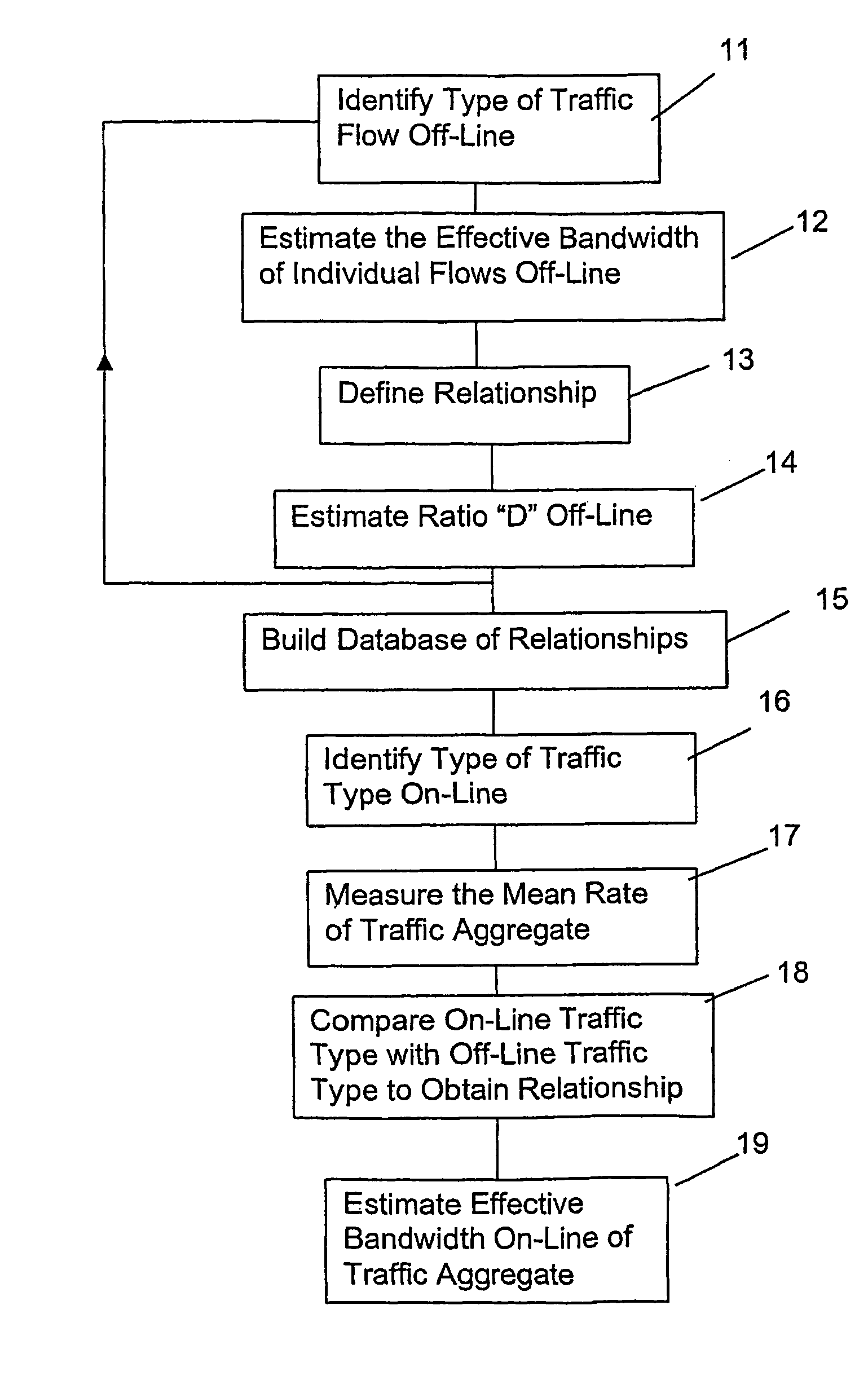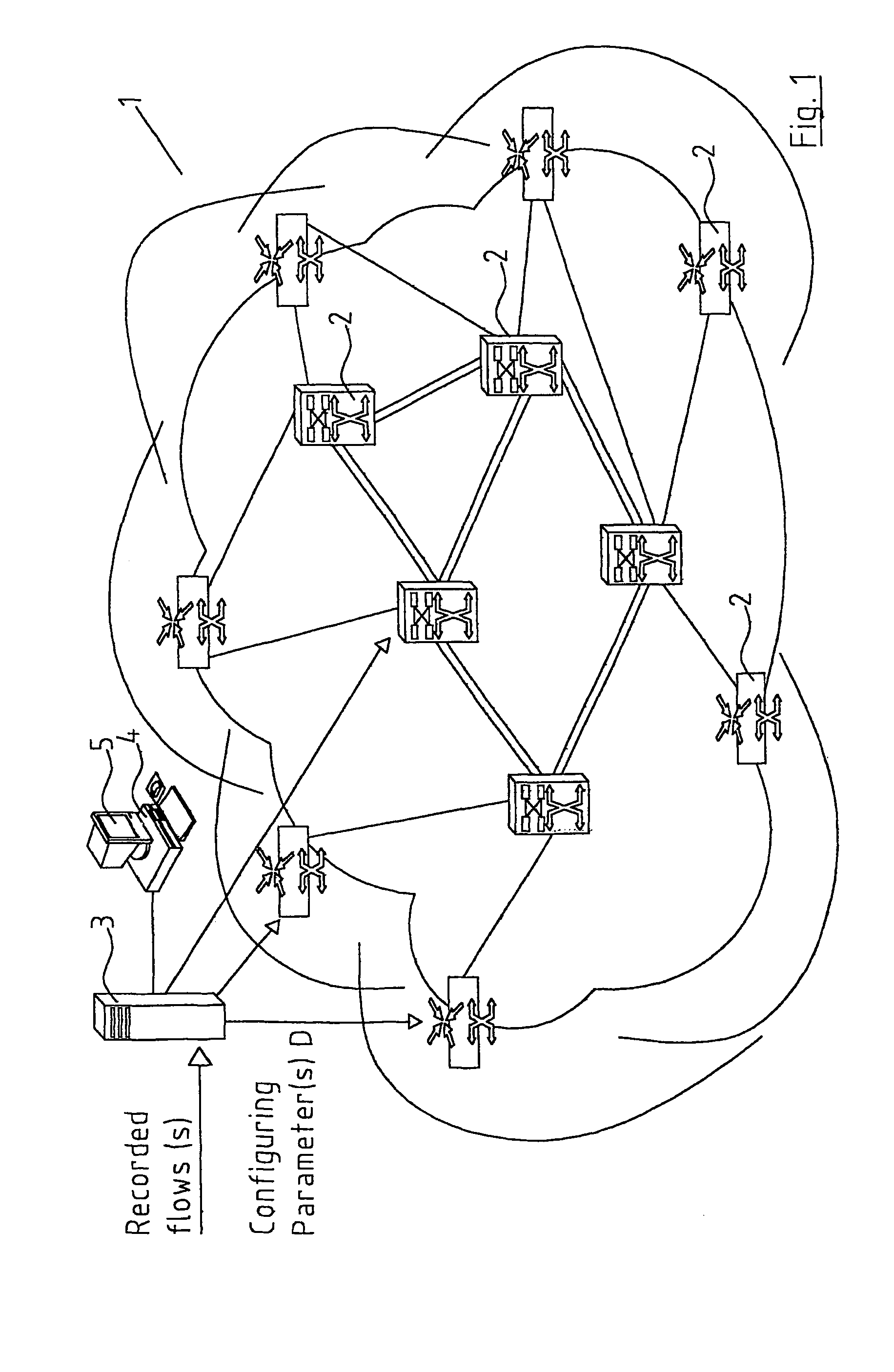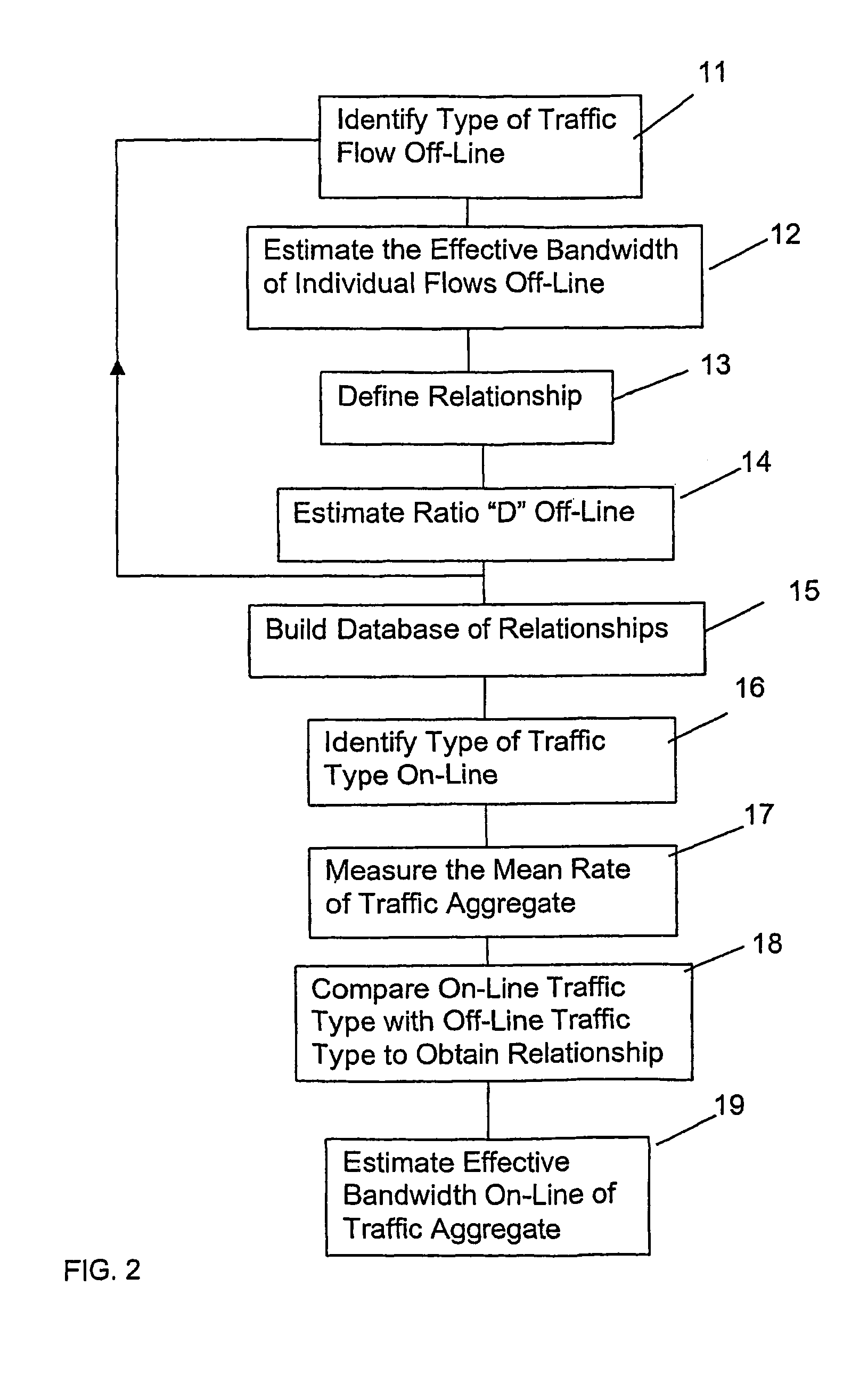Method and system for bandwidth estimation
a bandwidth estimation and bandwidth technology, applied in the field of bandwidth estimation, can solve the problems of insufficient router resources, inability to accurately estimate the effective bandwidth of traffic flow, complicated on-line implementation of effective bandwidth estimation, etc., and achieve the effect of calculating the effective bandwidth requirement quickly and easily
- Summary
- Abstract
- Description
- Claims
- Application Information
AI Technical Summary
Benefits of technology
Problems solved by technology
Method used
Image
Examples
Embodiment Construction
[0099]Referring now to the drawings and initially to FIG. 1, there is provided a communications network, indicated generally by the reference numeral 1 in which a number of switches or routers 2 positioned at each node control traffic flows within the communications network 1. A bandwidth estimation server 3 communicates via the network 1 and is connected to each of the routers 2 within the communications network 1. The bandwidth estimation server 3 can be remote from each router 2. It will be appreciated that the bandwidth estimation server 3 can be housed directly on a router 2 if necessary. A computer 4 is connected to the bandwidth estimation server 3 having a user interface 5 which allows an operator see the amount of bandwidth being used at each router 2 in real time. The bandwidth estimation server 3 stores a database of relationships, which will be discussed in more detail below. The server 3 has the ability to provide the configuration information either by downloading to r...
PUM
 Login to View More
Login to View More Abstract
Description
Claims
Application Information
 Login to View More
Login to View More - R&D
- Intellectual Property
- Life Sciences
- Materials
- Tech Scout
- Unparalleled Data Quality
- Higher Quality Content
- 60% Fewer Hallucinations
Browse by: Latest US Patents, China's latest patents, Technical Efficacy Thesaurus, Application Domain, Technology Topic, Popular Technical Reports.
© 2025 PatSnap. All rights reserved.Legal|Privacy policy|Modern Slavery Act Transparency Statement|Sitemap|About US| Contact US: help@patsnap.com



